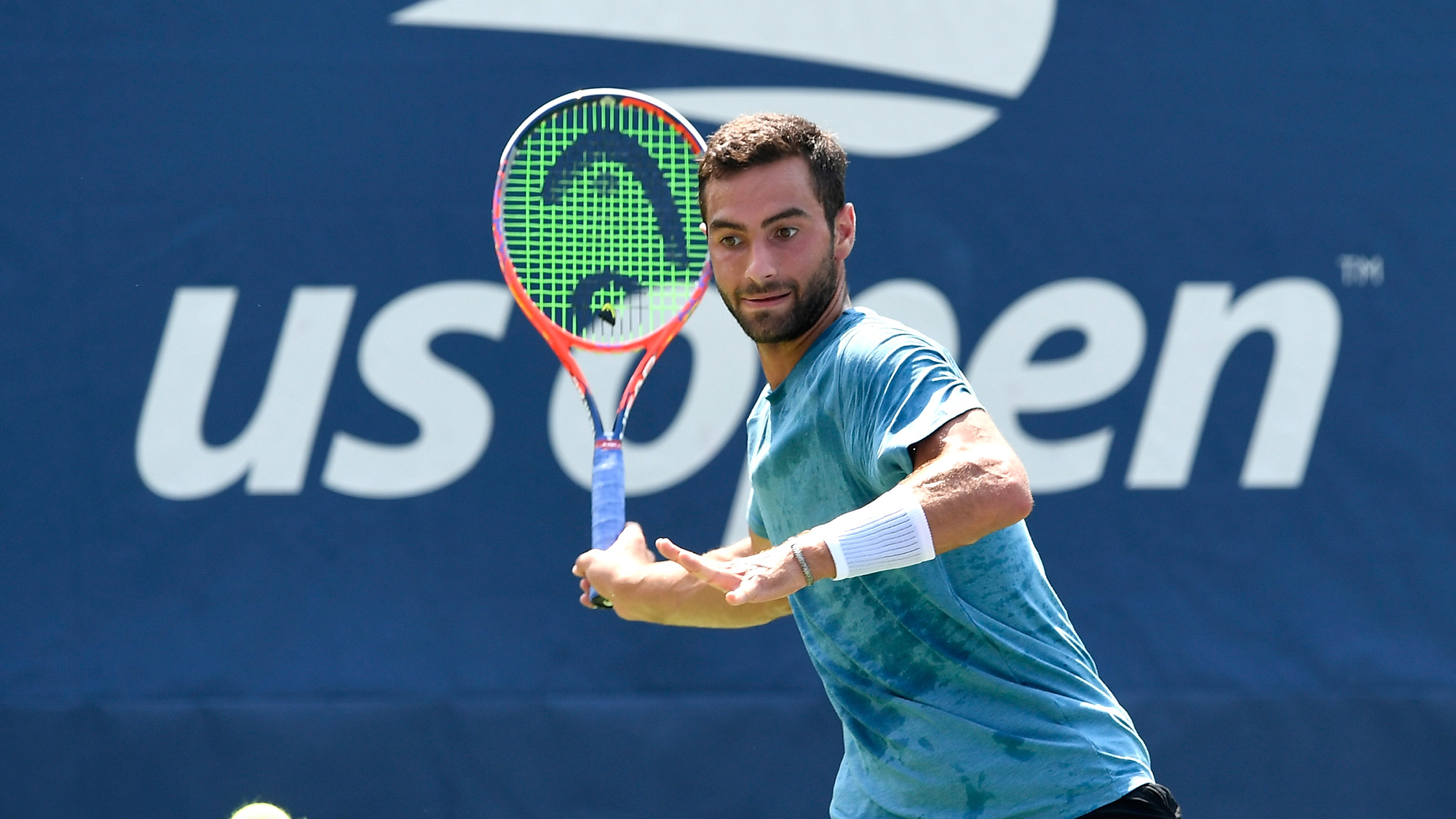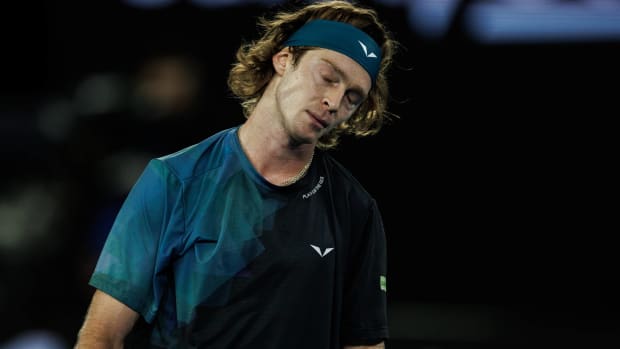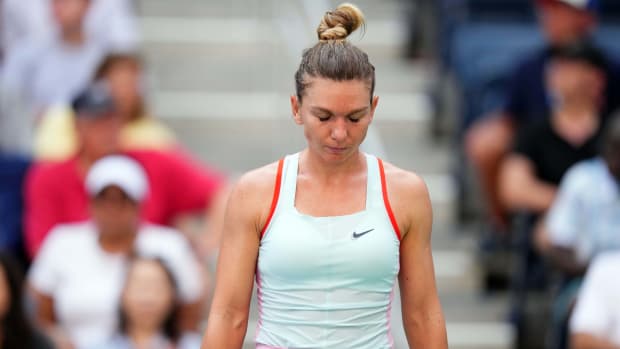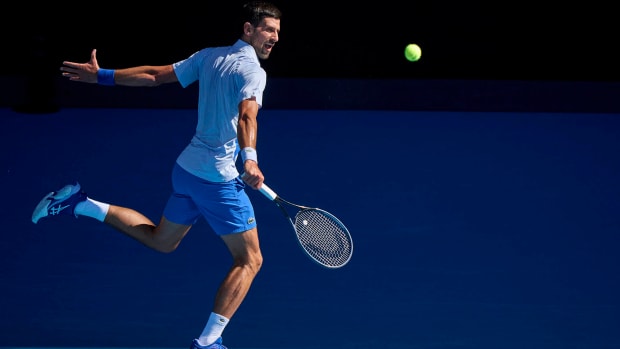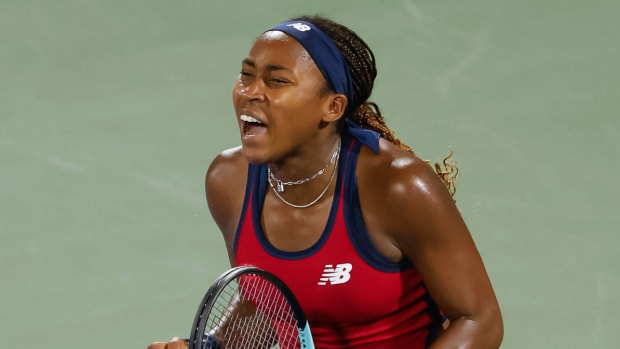Behind The Racquet: Noah Rubin Seeks to Humanize Players With New Instagram Account
A version of this story appears in the March 11, 2019, issue of Sports Illustrated. For more great storytelling and in-depth analysis, subscribe to the magazine—and get up to 94% off the cover price. Click here for more.
The idea came to Noah Rubin in the middle of the night. Jetlagged after flying back from Australia, where he had lost in the second round of Australian Open qualifying, Rubin was browsing Instagram—while watching The American Meme, a Netflix special about...Instagram influencers, of course—when he came across a post from Humans of New York.
“Boom, it just hit me,” Rubin, the world No. 153, says. “I love this page—how am I not doing something like this?”
So, on Jan. 19, he launched Behind The Racquet on Instagram, Twitter and Facebook. While Humans of New York, a popular social media account run by the photographer Brandon Stanton, features photos of anonymous New Yorkers and accompanying anecdotes, Rubin’s spinoff would showcase the best tennis players in the world, posing behind their strings and telling personal stories.
Last fall, Rubin and his best friend, Max Eichler, were musing on the mundane nature of tennis press conferences. Those mandatory post-match interactions produce rare moments of insight, sure, but the stilted environment rarely encourages deep reflection. “Yep, I feel great today, I played hard, my opponent played well, blah blah blah,” Rubin says. “We’re so used to the same old sentences.” Says Eichler: “They become so repetitive.”
With Behind The Racquet, Rubin hopes to provide another outlet for players. The account, which already has more than 6,000 followers on Instagram, showcases stories—many of them deeply personal—from professional tennis players. Madison Keys, Rubin’s highest-profile subject so far, described struggling with an eating disorder as a teenager. “I struggled with this problem for almost two years, which led to some issues with depression,” Keys is quoted in the caption. “I completely shut my friends and mom out of my life. I felt like I put this mask on to get through each day, hoping no one would ask how or what I was doing. I became super paranoid because I wanted to keep it all a secret and didn’t want anyone to worry.”
Rubin interviews all of his subjects himself. “This has given me the perfect excuse to go up to them and ask really tough questions,” he says. “What is it like to have a stutter? What is it like to be African American?” He doesn’t hesitate to inquire about painful experiences. “I’m looking for that thing that keeps them up at night,” he says.
After recording an interview, Rubin—who also takes most of the photos—transcribes it and sends the best excerpts to his editing team, which consists of Eichler and Rubin’s girlfriend, Jamie Weissler. They piece together the best quotes to create a coherent story, never adding words, then send the final paragraph to the subject for review. After Rubin receives approval, he posts it.
Rubin is disposed to idealism, and Behind The Racquet aligns with his aspiration to “change tennis and the world.” By spotlighting the personal stories of tennis players, Rubin hopes fans will see them as more than athletes, sparking more interest in the sport and helping pros relate to their fans. He also hopes to take the stigma away from conversations about mental health.
“They’re not superhuman just because they’re professional athletes,” Eichler says. “They still have struggles, and that’s what people want to hear about.”
Take Ernesto Escobedo, world No. 267, the first player after Rubin himself to be featured as a subject. The 22-year-old California native opened up about his stutter. “With people who don’t always speak as clearly as they want, they always get made fun of,” Escobedo told Behind The Racquet. “I learn to live with it, but try to keep improving. It’s always on my mind.” The post received dozens of comments offering support. "As a fellow stutterer and tennis player,” one commenter wrote, “I am now an Escobedo fan.”
Over the last seven weeks, Rubin has spotlighted 24 different players, including himself. Tennys Sandgren discussed his father’s death; Nicole Gibbs talked about depression; Dustin Brown reflected on race and identity; and Allie Kiick described her father’s descent into dementia. Rubin also featured one amateur player as part of a new initiative to encourage Behind The Racquet fans to share their own stories.
“I was definitely a little nervous at the onset that people were going to be nervous to share this stuff,” says Rubin’s older sister Jessie, a social marketing manager for NBC who has advised her brother on Behind The Racquet. “It’s deep, and it shows vulnerability, but all you need to do is ask and ask in the right way. He’s keeping the stories true to the athletes.”
Behind The Racquet is Rubin’s passion project, but he has ambitious goals for its future. He talks about turning it into an actual gallery and raising money for charity, or even compiling stories in a coffee table book. (“I love coffee table books!” he says.) “When Noah puts his mind to something, he gets it done,” Weissler says. “This is going to go big because he believes in it.”
Rubin, of course, still has his day job to worry about. He had his best professional season last year, winning two Challenger events, beating No. 9 John Isner at the Citi Open in Washington, D.C., and reaching his career-best ranking of No. 125. He’s played one ATP match so far this season, losing in three sets to Jordan Thompson at the New York Open.
Going forward, his opponents could double as subjects.
“I’m not a journalist; I’m a tennis player,” he says. “I just want them to have an outlet to share their stories.”
